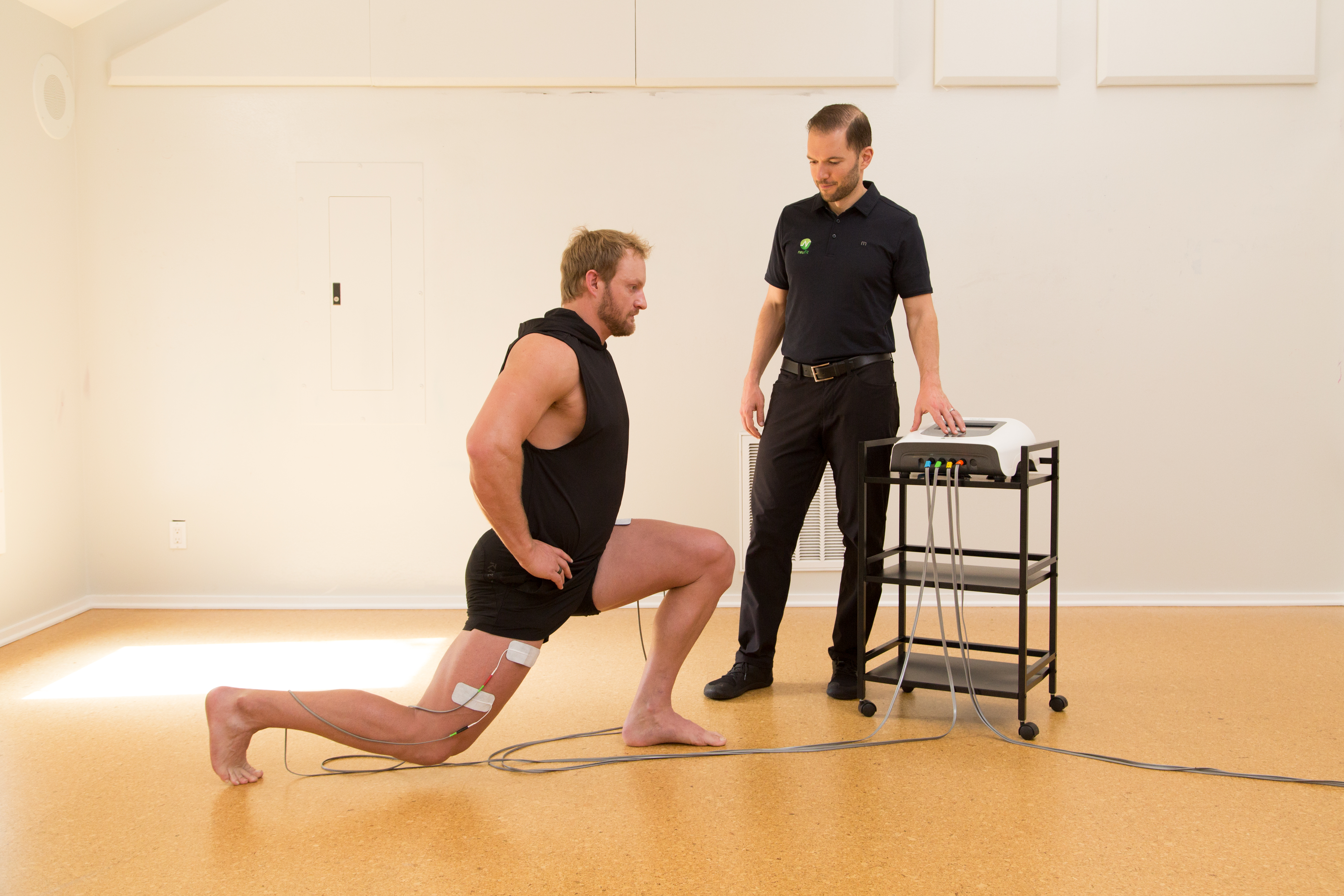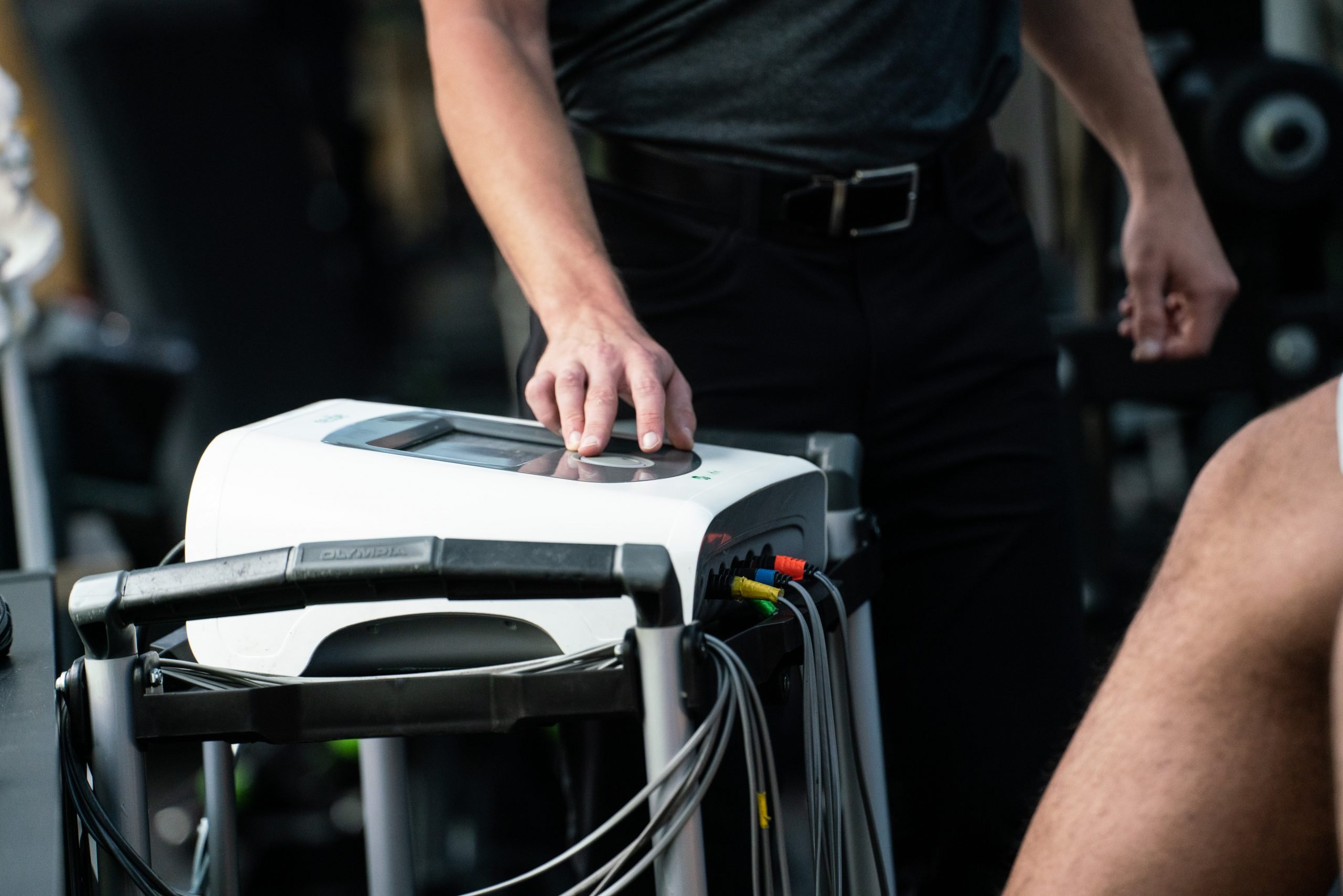In this week’s blog, our focus turns to the ‘heart’ of nervous system health so to speak with a look at how we measure heart rate variability and the heart’s response to exercise.
While higher heart rate variability is generally a sign of better nervous system health, it’s important to keep in mind that it can differ substantially from one person to the next. Factors like age, gender, lifestyle, and fitness level have an influence, so it’s important to take them into account when determining an optimal amount of heart rate variability for each person.
Instead of focusing on what’s “normal” or “right,” at NeuFit®, we prefer to use both individual measurements and population norms when monitoring heart rate variability.
For example, if someone’s baseline measurement of seventy-five milliseconds is better than 80 percent of the population in their age group, it gives us a good frame of reference. However, we still want to observe how their heart rate variability increases or decreases over time in the context of their training and lifestyle choices.
How to Measure Heart Rate Variability
There are many different devices that measure heart rate variability, along with different software programs that calculate a standard deviation and plug that into a variety of formulas to come up with a value for heart rate variability.¹
Since it’s difficult to make these calculations manually, we recommend wearable devices to monitor heart rate variability on a daily basis.
Based on our experience, the two wearable devices we prefer are the Biostrap and the Oura Ring. I like them for three reasons. First, they’re easy to wear (one is a strap and one a ring). They’re also accurate and consistent. In fact, both devices are clinically validated,² and both were used as part of the NIH (National Institutes of Health) studies looking at biometrics to predict COVID diagnoses.³ Finally, they measure heart rate variability during sleep.
So why is it important to measure heart rate variability during sleep?
During sleep, we don’t consciously control our breathing or other bodily activities, so these devices typically provide unbiased readings that are a relatively accurate reflection of the actual status of the body. Besides measuring heart rate variability, they also grade the body’s overall current functional capacity and neurological responses to stress and challenge. (Note: If you already own a Fitbit®, Whoop®, Garmin®, or similar wearable device, you can also use it to track these indicators during sleep.)
In addition to wearable devices, some doctors and therapists invest in high-end clinical devices to measure heart rate variability, including EKGs, chest straps, or wrist cuffs with electrodes. These devices are also valuable measurement tools, particularly when monitoring changes before and after an exercise session or evaluating someone’s level of readiness for a workout.
Let’s take a moment now to share a clinician’s experience with the Neubie® device. Jason Waz is a physical therapist and founder of Competitive Edge Physical Therapy in Tampa Florida.
“We almost found out by accident how much the Neubie electrical stimulation device affects the autonomic nervous system based on heart rate variability. Previously, we’d been using a fingertip heart rate variability tracking device. The first year we used the Neubie device, I noticed patients almost always saw an increase in heart rate variability. It was always higher after using the Neubie device and to a much greater degree than with anything we had seen in previous years.
Recently, we decided to invest in an advanced diagnostic heart rate variability system and have our DPT (Doctor of Physical Therapy) interns study the results as part of their research. We looked at 600 patients and found two very clear patterns:
• An intense Neubie treatment or training session caused heart rate variability to dip that day because the body was intentionally depleted. But over the next three days, it would go up significantly as they recovered.
• If people started off with low heart rate variability at the beginning of a session, we would put them on the Neubie “Master Reset” (a technique using the Neubie to stimulate the vagus nerve, described in detail in an upcoming blog post) for twenty to thirty minutes. Across the board, their heart rate variability went up after the session. Though the results might take two or three weeks for the most neurode-generative or compromised patients, their numbers also increased.
Based on my experience, I recommend that any physical therapist or practitioner who has something as powerful as the Neubie device invest in some kind of tool to monitor heart rate variability.
You can then use this tool as your own form of evidence-based practice, testing heart rate variability at the beginning of a session, doing an intervention with the Neubie device, and testing again after the session.”
Heart Rate Response to Exercise
In addition to heart rate variability, heart rate response to exercise is a powerful indicator of how well the nervous system is functioning.
It’s commonly understood that the ability to bring down the heart rate quickly after exercise is a sign of a healthy nervous system, not to mention a healthy cardiovascular system. However, the heart rate response to exercise—which includes how much and how quickly a person can increase their heart rate when they start physical activity—is just as important.
If someone is capable of quickly raising their heart rate to its maximum, it’s a sign that their brain isn’t trying to hold their body back. Instead of imposing limitations related to survival and protection, the brain is allowing them to take their body to its physical peak. Why? Because the nervous system is sending signals that their body is robust and resilient enough to handle the demands and recover afterward.
On the other hand, if there’s a deficit in any of the body’s structural or biochemical systems, the brain will limit the body’s output and inhibit heart rate response. If there’s any sort of imbalance in the cardiovascular system, digestive system, the metabolism, the hormones, and/or the muscles or connective tissues themselves, the brain shifts into survival mode—and it won’t let the body exert full effort, much less raise the heart rate to its maximum.
Optimal Heart Rate Response and How to Measure It
The typical formula for estimating maximum heart rate is 220 minus a person’s age. According to this formula, the maximum heart rate for a forty-year-old person is 180 beats per minute.
Many medical professionals and researchers are starting to replace this formula with a more accurate and up to date one: 207 minus .07, multiplied by their age, or 207 – (.07 × age). This formula yields a similar estimated maximum heart rate of 179 for a forty-year-old (estimates vary for people of different ages).4
Regardless of which formula we use, our experience shows that it’s possible, not to mention safe and beneficial, for highly trained athletes to go beyond traditional estimates for maximum heart rate. For example, imagine an elite athlete whose heart rate is around 100 beats per minute in a state of moderate activity or recovery between exercises. If they break into a full sprint, they can raise their heart rate above 200 beats per minute—well above the prescribed maximum—and have no problems recovering afterward.
This level of heart rate response isn’t limited to elite athletes, however. As long as their nervous systems are healthy and functioning well, people of all ages and abilities are physiologically capable of going beyond conventional estimates when it comes to heart rate and heart rate response. (At the same time, it’s important to keep in mind that pushing anyone to their maximum heart rate has inherent risks. Before practicing any type of rigorous cardiovascular exercise, people need to get clearance from their doctors.)
To measure heart rate response to exercise, we use chest strap or arm band heart rate monitors, which are more sensitive than the typical heart monitor. We like the Biostrap interface here, using the chest strap or arm band instead of the wrist strap designed for tracking during sleep. (Other options on the market can work, but we don’t recommend using a regular wrist strap or a watch in this case. It takes specialized technology to respond quickly enough to measure these types of heart rate responses.)
In next week’s blog, we’ll build on this discussion further with a look at blood pressure, energy levels, mental acuity and sleep and nervous system health. Until then…
Let’s charge forward to better outcomes together!
References
¹ There are a number of different formulas we can use to calculate heart rate variability (For a great overview, see: Fred Shaffer and J. P. Ginsberg, “An Overview of Heart Rate Variability Metrics and Norms,” Frontiers in Public Health 5 (September 28, 2017), https://doi.org/10.3389/fpubh.2017.00258.). When measuring heart rate variability over time, it’s important to use the same formula (i.e., the same device)
in order to accurately gauge trends and fluctuations. If we compare heart rate variability readings using different devices and different formulas, the results can
be misleading.
² Stefan Gradl et al., “An Overview of the Feasibility of Permanent, Real-Time, Unobtrusive Stress Measurement with Current Wearables,” in Proceedings ofthe 13th EAI International Conference on Pervasive Computing Technologies for Healthcare (New York: Association for Computing Machinery, 2019): 360–5, https:// doi.org/10.1145/3329189.3329233; Delaram Jarchi et al., “Estimation of HRV and SpO2 from Wrist-Worn Commercial Sensors for Clinical Settings,” in 2018 IEEE 15th International Conference on Wearable and Implantable Body Sensor Networks (BSN) (New York: IEEE, 2018): 144–7, https://doi.org/10.1109/bsn.2018.8329679; Onur Dur et al., “Design Rationale and Performance Evaluation of the Wavelet Health Wristband: Benchtop Validation of a Wrist-Worn Physiological Signal Recorder,” JMIR MHealth and UHealth 6, no. 10 (October 16, 2018): e11040, https://doi.org/10.2196/11040; Massimilliano de Zambotti et al., “The Sleep of the Ring: Comparison of the ŌURA Sleep Tracker Against Polysomnography,” Behavioral Sleep Medicine 17, no. 2 (March 21, 2017): 124–36, https://doi.org/10.1080/15402002.2017.1300587; Hannu Kinnunen, “Sleep Lab Validation of a Wellness Ring in Detecting Sleep Patterns Based on Photoplethysmogram Actigraphy and Body Temperature,” OURA Ring, last modified February 9, 2016, https://d1a0efioav7lro.cloudfront.net/wp-content/ uploads/2018/10/23112923/Validity-of-the-OURA-Ring-in-determining-Sleep-Quantity- and-Quality-2016.pdf.
³ Mitch Leslie, “COVID-19 Fight Enlists Digital Technology: Tracking an Elusive Foe,” Engineering 6, no. 10 (October 2020): 1061–3, https://doi.org/10.1016/j.eng.2020.08.006.
4 There are many different formulas we can use to calculate estimated maximum heart rate. The 207 – (0.7 × age) formula comes from: Hirofumi Tanaka, Kevin D Monahan, and Douglas R Seals, “Age-Predicted Maximal Heart Rate Revisited,” Journal of the American College of Cardiology 37, no. 1 (January 2001): 153–6, https://doi.org/10.1016/ s0735-1097(00)01054-8.; Yet another alternative formula is this: males = 202 – 0.55 × age and females = 216 – 1.09 × age (G. Whyte et al., “Training Induced Changes in Maximum Heart Rate,” International Journal of Sports Medicine 29, no. 2 (February 2008): 129–33, https://doi.org/10.1055/s-2007-965783.)

